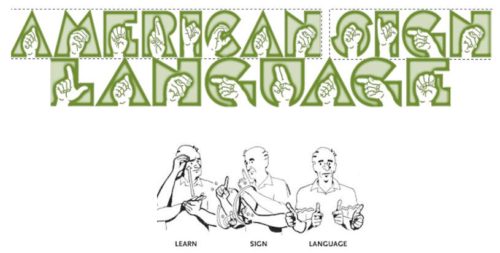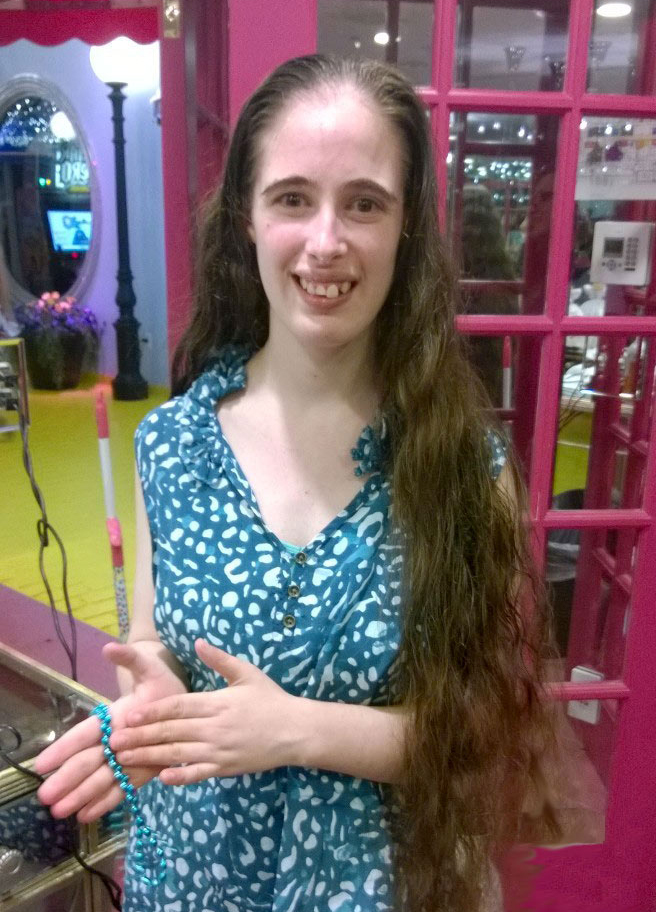






Please Don’t Take Away My Autistic Son’s Treatment
The Wall Street Journal
COMMENTARY
The FDA might ban the harmless skin shocks that keep him from self-injury, though they have worked.
Paul E. Peterson
June 23, 2016 7:01 p.m. ET
Though they have never met my son David and have no information about his specific diagnosis or care, bureaucrats at the Food and Drug Administration are endangering his life by proposing to stop the one treatment that has allowed him to lead a happy life that includes learning, socializing and having loving relationships with his family.
David is one of a small percentage of individuals with autism and mental disabilities who engages in life-threatening self-injurious behaviors, including shoving his hands down his throat and banging his head with such force as to permanently damage his ear. For the past 10 years he has been dissuaded from such activity by means of an abundance of rewards if he controls his self-harming behavior and an unpleasant, but harmless, two-second skin shock via an electronic stimulus device, or ESD, if he attempts self-injury.
While the device has been used effectively for many years with individuals like David at the Judge Rotenberg Educational Center, a residential special-needs school in Canton, Mass., the FDA is trying to ban it at the behest of ideologically driven advocacy groups such as the Disability Law Center in Massachusetts, whose executive director calls the therapy “horrible torture.”
Amazingly, the FDA says similar therapy is allowable if it is used to deter cigarette smoking.
Denial to my son is justified on the grounds that he doesn’t have the same ability as smokers to decide whether or not to receive aversive treatment. But that specious argument could be used to ban all medical treatments for people with intellectual disabilities for any condition whatsoever. It is standard practice to give people like David the same treatment others would receive as long as the consent of parents or guardians is obtained. As a further protection, all ESD treatments at David’s school must be approved by a probate judge. Further, David receives an abundance of rewards for controlling his behavior, and he is under the constant supervision of a dedicated, caring team.
Denying treatment to people with disabilities when it is available to others violates the equal protection clause of the 14th Amendment. In its 1997 ruling in Judge Rotenberg Educational Center Inc. v. Commissioner of the Department of Mental Retardation, the Massachusetts Supreme Judicial Court unanimously affirmed a lower-court finding of contempt against the Commonwealth of Massachusetts for its interference with the use of electronic stimulus devices. The FDA’s proposal ignores that decision.
The FDA claims that alternative treatments are available. It is wrong. After trying many other institutions and therapies, including the drugs Mellaril, Thorazine, Haldol, Ritalin and Noctec, David in 1988 entered the highly regarded Neurobehavioral Unit at the Kennedy Krieger Institute that specializes in the treatment of self-injurious behaviors. Specialists explored a wide variety of treatment protocols, including various drug therapies. After four months, the center’s experts, finding no effective alternative, agreed that placement at the Judge Rotenberg Educational Center was the best available option for David. Our local school district authorized the placement.
The FDA asserts that skin shocks are no longer necessary but it provides no documentation that drugs are effective for people like my son. In the past, drug therapy aggravated David’s self-injurious behavior. The use of psychotropic drugs also poses multiple risks of physical and psychological side effects. By contrast, skin shocks have no demonstrated side effects beyond a temporary redness to the skin that usually disappears within minutes.
The FDA also asserts that the skin shock constitutes physical and psychological harm. My wife and I have both experienced an ESD application. The experience is disagreeable, but not nearly as painful as a paper cut to the finger. Nor have we detected any sign of psychological damage to our son. Quite the contrary: David loves to visit his family, and he is no less happy to return to his friends in the residence where he lives.
Before arriving at his special-needs school, David’s attempts at self-injury were continuous unless he was physically constrained. Today, he is in excellent physical health, and he has made striking gains in his sociability, curiosity and ability to carry out basic self-care. He participates in community events and visits his family about once a month. His attempts at self-injury average once a week, a low level he has sustained for the past several years.
Our son, who is now 45 years old, is enjoying a quality of life that my wife and I did not believe was possible before he had access to this treatment. The FDA’s proposal would place his health—and life—at risk. The alternative treatment plan for him is physical restraints and mind-numbing drugs. For the sake of our son and others like him who have benefited from an electronic stimulus device, the FDA must withdraw its proposed regulation.
Mr. Peterson is a professor of government at Harvard University where he directs the Program on Education Policy and Governance.
http://www.wsj.com/articles/please-dont-take-away-my-sons-treatment-1466722896

New York State wants to save money for its taxpayers. A laudable desire, but not at the expense of its most vulnerable citizens.
In an Op-Ed for the New York Daily News, Dr. Mitchell Shear and Marcia Shear write about their daughter Samantha, a student at JRC. Her progress from a “bloodied and bruised 80-pound girl once forced to wear arm splints, a neck brace, and helmet” to a happy, smiling, and sunny young woman, is credited by the Shears to the success of Sammy’s program at JRC.
But now the state’s Office for People With Developmental Disabilities has decided people like Samantha Shear who are served at out-of-state facilities must be returned to New York. They claim this will save the state money, but this decision doesn’t take into consideration the needs of the severely disabled person herself.
Read more about the Shears’ struggle to keep Samantha at JRC in the environment that serves her well.

As the Quality Control Director, it’s vitally important for me and my staff to ensure there’s a high level of continuity with student programs, company policies, and regulations.
To achieve these objectives on a daily basis, the monitoring department employs approximately 60 staff who are scheduled 24/7 at our various residences, school buildings, and areas in between. These staff are called roving monitors, and they randomly visit the classrooms and residences and any areas the students and clients frequent, and assist the residential staff as needed.
The DVR/monitoring staff are long-term employees who have previously held various positions at JRC. These staff possess good knowledge, understanding, and have a good amount of experience with the JRC program, which are strong attributes for the many functions they’re performing.
To further achieve a high level of supervision of students and staff, JRC has invested a lot of time and money in a state-of -the-art digital recording video (DVR) system.

This system houses approximately 1000 cameras which allow live-streaming 24 hours a day of all of the JRC residences and school buildings.
Because of this, the DVR/monitoring staff are able to take immediate corrective actions when any deviation is observed, and to cue or alert staff with questionable behavior(s) and so on.
The staff working in the residences and school buildings are also able reach out, at any time, by calling the monitoring/DVR office should they have any questions or require assistance.
Protecting the integrity of the JRC program and experience, and the safety and well-being of all our students and clients, as well as staff, is our top priority.

Time does fly when you’re having fun! I have been teaching Physical Education at JRC for almost 28 years. I enjoy working with all our students and clients. They make every day exciting.
The goal of the Physical Education Program at JRC is to motivate our students and clients to develop lifelong patterns of physical activity. We try to help our students and clients understand how important it is to exercise regardless of their abilities. We feel it is important to motivate and encourage all our students and clients, including those with physical and intellectual challenges.

During physical education classes our students are able to work out on a variety of exercise equipment. The students also participate in 30 minutes of exercise per day, indoors in our Fitness Room and full-size gym or, weather permitting, outside on the hiking trails, playground, and basketball court.
In addition, the physical education schedule allows for extra time for students and clients who would like to earn extra gym. Students or clients who may want to work out for the pure joy of exercising can earn extra gym by passing a special contract.
We had a student, DR, who arrived at JRC in September 2013; he weighed 345 pounds and was not able to walk very far without stopping to rest.
With a healthy diet from our outstanding chef and an increase in his exercise, he just weighed in at 215 pounds – a loss of 130 pounds over 8 months!
During his workouts, DR was given many high-fives and pats on the back. He started out walking one minute and taking a break, and slowly increased the time. He can now walk for 20 continuous minutes! We are so proud of him!
Overall, I feel that I have challenged many of my students and clients to lead healthier lives, which makes me proud to be a teacher and contributor to the success of those who have attended JRC.

Ms. Lorraine Slaff is the mother of identical twins, Stuart and Matthew. Matthew, now 41, came to JRC shortly before turning 17. Stuart has never attended JRC. Ms. Slaff sat down recently with JRC staff to discuss her sons’ situations.
She says Matthew has done “very well at JRC. He’s very happy, he’s able to pursue various interests. He loves going to the Science Museum, he enjoys looking at birds and going to zoos. He loves classical music.”
Before he came to JRC, Matthew was “in a hospital for over five months, nobody wanted him. He cracked his head against sharp points.” The (NYS) Board of Education “begged me to sign him out of education, which I refused. The hospital didn’t want him. He was in there originally for plastic surgery because he split his head” so badly “you could look into his head.” They “finally corrected that, and they still gave him a lot of medication” and kept staff with him 1-to-1, but if it wasn’t a male staff, “he’d go ahead and bang his head again.” He’d need more stitches each time.

At JRC, “he’s doing fabulously well.” Matthew has a “very structured situation.” With the video monitoring, JRC staff can “watch [even] when he sleeps. He’s watched, and he’s safe, and he tells me he feels safe. Because he’s watched so closely” and kept from self-harming behaviors, “he’s able to enjoy all the things that he likes and he hasn’t been able to before.”
“His identical twin, Stuart, was doing very well, had a job, and worked, when he came out of his school program – he was also in a handicapped program – he had a job for a few years, took public transportation [to it]” but then he lost the job, and is “now on so many medications, his body has swelled up, he’s had a grand mal seizure from the medications, during a snow storm; I wasn’t even able to get to him. He’s become more and more dangerous; he can’t even go to my house [or] to family gatherings. He’s dangerous. I took him out recently, he put his hands around my neck in a restaurant. It’s terrible.”
Mrs. Slaff continues: “The other one [Matty] is doing so well, I can take him out – I never have any of this trouble with Matthew, but Stuart is a mess, a complete mess. Lately he has hardly gone to his day program, he claims he is too tired. They give him too much medication, and in addition to that he’s had many psychiatric hospitalizations, and I know the bills [from the medications and hospitalizations] are very very high.”
“I’m very happy [with Matthew’s situation at JRC] and my whole family is happy. My daughter, who is a psychiatrist with a fellowship in autism, says that this is the only program that is good for somebody with the kind of behaviors that Matthew has shown, and she wishes that Stuart could have access to such a program.” However, the state won’t authorize it, and “insists that the medications and the psychiatric hospitalizations is the way to go.”
“I visit [Matty] approximately once every four weeks and we spend weekends together; he loves to go out, we go to various places around Boston. Stuart, I stopped taking with me, because he’s too dangerous. The house where he lives, they’re very kind people, but they can’t do very much because they’re not equipped” to do anything other than medicate him. The laws in New York State are “causing people to become overly-medicated” and the rules in New York “say no, you can’t do that” [use behavioral methods] “and when you can’t do that, you wind up on medication when you can’t follow a behavior program.”
If your children “have severe, health-threatening behaviors, [JRC] is the only place for them.” With Stuart, who “says [himself] he’s not clear”, because he’s an adult, the program he’s in gives him whatever he asks for, such as “extra portions [of food]”, for instance.
“But Matthew is thin, he looks good, he’s alert; [Stuart] says ‘I have to sleep, I can’t go to program’” because of the medications. And “despite all the medications, he’s wound up in the hospital periodically.”
“Matthew is a happy person, but Stuart is absolutely miserable. They’re giving him what he wants, but he’s miserable, because he knows he wants somebody else in charge, and there is nobody in charge except him, and he knows he’s not capable of being in charge [of himself].”
“I’m very happy with Matty. Most of his tics – and he did have tics, from all the medications – went away. He’s doing very well, he’s very content. He’s no longer overweight from medications, and he’s just a happy happy person.”
“When I speak with my other son, he tells me he’s going to throw himself on the train tracks … he’s gone across the street without looking and almost got killed by a car, and took a swing at a passerby. There’s day and night between the two of them, and they’re identical, they look just alike.”
“I know Matty is so happy, and Stuey is so miserable. That’s the difference. I just love being with Matthew, and I cringe when I have to be with Stuart. I never know what he’s going to do. Matthew, I can take into restaurants, I can take him to shows, music, anything. But Stuart, nothing. Absolutely nothing. Just a lot of medication. He’s going nowhere and it’s very very scary to me. Sometimes I feel like he’s dying a slow death. I sign for the medications because I feel I have no choice, but I know what the side effects of these medications are. They’re pretty bad, like the grand mal seizure he had, and the overweight when diabetes runs in my family.”
“I feel bad and I can’t reason with him; he’s not a reasonable person. He talks, but he says himself, ‘I’m not clear.’ At least I’ve got one son who’s doing all right, but I wish both of them were. If there was any way to get Stuart into a program like [JRC] it would be wonderful. But all they have is drug programs, and the bill for the drugs and the hospitalizations is very very high. So, when they tell me they’re saving money by not having behavioral programs, that’s not true.”
Thank you, Mrs. Slaff, for speaking with us, and for your continuing support of the work that allows Matty to have a good life here at JRC.

I have had the pleasure of being a nurse at JRC for 2 1/2 years.
I have worked in many other places such as hospitals and in-patient mental health facilities, and I have never had such a great work experience as I have had here at JRC. Unlike other facilities where I have worked, I feel I have the opportunity to get to know our students and clients and become an active and important part of their lives.
Each day, I look forward to interacting with our students and clients and ensuring their well being in a hands-on fashion instead of just through monitoring of charts, labs, vital signs, etc.
One of the greatest things about being a nurse at JRC is that I have the opportunity to see a student or client’s health and behavior improve as they receive treatment here at JRC.

One case in particular really stands out in my mind as a testament to this. We had a student come in at 256lbs and on three different psychotropic medications. She also was on oral diabetic medications and high doses of insulin twice daily. In a year she lost 86lbs and has been able to discontinue all of her psych meds and also is off all her diabetic medications. We don’t even need to check her blood sugars anymore!
To have the opportunity to watch the transformation of a student or client who has weaned off medications, and have her personality come out, and her eyes brighten as her body heals and the effects of the medication fade, is truly special.
Due to an outstanding chef, kitchen staff, and physical education departments, we have had the opportunity here at JRC to watch numerous clients and students lose weight and no longer be insulin-dependent and/or medication-dependent diabetics. In a world that is experiencing an obesity epidemic, this is truly an amazing feat.
One of the greatest rewards is not only to see how amazing the clients and students look and feel, but also to be able to speak to the parents and guardians and hear how grateful they are for the changes they see in their children. I greatly enjoy being able to interact and communicate with the parents and guardians of our students and clients, for I feel like this enhances the experience at JRC for the parents and guardians, students and clients, and myself.
At JRC we are a full-functioning nursing department that provides care for our students and clients on a 24 hour-a-day basis. We staff both LPNs and RNs, and we provide medical services in both the school and residences. We have two consulting physicians and also have close partnerships with many local hospitals and specialty offices to ensure our students and clients receive the best healthcare.
Nursing completes medication passes, first aid, sick visits, well checks, immunizations and body checks. Nursing also provides education in hygiene, sexual education, and health promotion. We also provide education to staff as to proper care of our students and clients, Emergency Medication Administration, and medication administration program (MAP) training.
Our goal as the Nursing Department to ensure that our students and clients are receiving the best medical care through a teamwork approach with all other specialties at JRC.